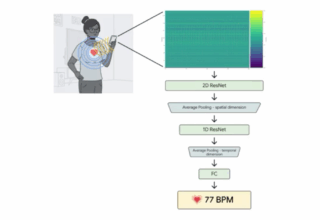What is the meaning of an Individual Retirement Account (IRA)?
The IRA, short for ‘individual retirement account,’ is a tax-advantaged investing tool that individuals use to reserve retirement savings funds. There are different types of IRAs.
- Traditional IRAs
- Roth IRAs
- SEP IRAs
- SIMPLE IRAs

Individual taxpayers can establish either Roth or traditional IRAs, while self-employed individuals and small-business owners set up SIMPLE and SEP IRAs. An IRA must be opened only with an institution that has received Internal Revenue Service (IRS) approval to offer these accounts. The options include brokerage companies, banks, savings and loan associations, and federally insured credit unions. Most individual investors open IRAs with brokers.
Traditional IRAs
Since IRAs are meant for retirement savings, there is often an early withdrawal penalty of 10% if you withdraw money out before the age of 59½. Depending on the type of IRA you possess, you may also need to pay income tax on your early withdrawal. Mostly, contributions to traditional IRAs are tax-deductible. If an individual places $6,000 into an IRA, that person’s taxable income decreases by the amount contributed. However, when individuals withdraw money from their accounts during retirement, the withdrawn amount is taxed at their ordinary income tax rate. In 2020, annual individual contributions to traditional IRAs are not permitted to exceed $6,000. Individuals are allowed to contribute up to $7,000 per annum if they are 50 years or older.
The IRS left the IRA contribution limit criteria unchanged. However, they changed the income phase-out range for deducting contributions to a traditional IRA for investors with retirement plans at work. The phase-out range adjusted to $104,000–$124,000 for married couples and $65,000–$75,000 for singles. The SECURE or the ‘Setting Every Community Up for Retirement Enhancement Act’ in 2019 increased the age requirement of taking RMDs from 70½ years to 72 years. It also eliminated the age limit when a person could contribute to an IRA, which was 70½ years. An individual of any age with earned income could now contribute to an IRA.
Roth IRA
Roth IRA contributions are not tax-deductible. However, qualified distributions are tax-free. Once can contribute to a Roth IRA using after-tax dollars. The Roth IRA contribution limits for 2020 and 2021 are the same as for the traditional IRAs. For investors under the age of 50 years, The maximum amount is $6,000. If an individual is 50 years or older, the limit rises to $7,000. There are income limitations for contributing to the Roth IRA. For single filers, the phase-out range lies in $124,000 to $139,000 for 2020. The phase-out range spans from $106,000 to $196,000 for married couples filing joint taxes in 2020.
401(k) Plans
It is a retirement account offered to the employees of a company. If an individual opts to make a pre-tax contribution, their contributions will reduce the taxable income. In addition to this, the money will grow tax-deferred, and they will pay taxes on the withdrawals in retirement. The contribution limit for the employee is $19,500 in 2020, and if you are over the age of 50 years, you can put in an additional amount of $6,500.
403(b) Plans
Also recognized as the tax-sheltered annuity (TSA) plan, a 403(b) plan is a retirement plan offered by public schools and specific 501(c)(3) tax-exempt organizations. Employees save for their retirement by making necessary contributions to individual accounts. Employers are also allowed to contribute to the employees’ accounts.
SEP IRA
Self-employed individuals, such as freelancers, small-business owners, and independent contractors, can set up SEP IRAs. The acronym SEP stands for ‘simplified employee pension’ and adheres to the same taxation rules for withdrawals as those of a traditional IRA. In 2020, SEP IRA contributions are limited to 25% of compensation or $57,000, whichever is less.
SIMPLE IRA
Also introduced for self-employed individuals and small businesses, the acronym SIMPLE stands for ‘savings incentive match plan for employees.’ It follows the same taxation rules for withdrawals as the traditional IRA. Unlike SEP IRAs, a SIMPLE IRA permits employees to contribute to their accounts, and the employer is required to make contributions. All the contributions are tax-deductible and potentially push the business or employee into a lower tax bracket. In 2020, the SIMPLE IRA employee contribution limit is $13,500, and the catch-up limit (for workers aged 50 years and older) is $3,000.
How to open an IRA?
Two ways to open an IRA are through Robo-advisors and brokers.
Robo-advisors:
If you require help managing your retirement account, consider a Robo-advisor. It is a service that selects low-cost and risk-appropriate investments for you.
Brokers:
If you wish to select investments for yourself, an online broker can be an excellent way to go. You can contact different broker agencies as per your convenience and open an IRA account within no time.
General Information
Annual contributions to all of your account MAY NOT EXCEED lesser of 100% of your compensation or $57,000 for 2020. For 2020, this limit increases to $63.500 if you include catch-up contributions. Besides, the amount of compensation that can be considered when determining employer and employee contributions is limited to $285,000 in 2020.
Related Terms
- Inherited IRA
Many call it the beneficiary IRA, an inherited IRA is an account opened for an individual who inherits a retirement account or retirement plan account when the original owner passes away.
- Rollover IRA
It is an account used to move and consolidate money from old 401(k)s or other employer-sponsored retirement plans into an IRA.
- IRA Distributions
Often referred to as RMDs, these distributions are primarily enforced on tax-deferred retirement accounts. These include workplace plans such as 401(k)s and 403(b)s and traditional individual retirement accounts self-employed retirement plans, including SIMPLE and SEP IRAs. Roth 401(k) accounts may also be subjected to RMDs.
- Spousal IRA
A spousal IRA is known as an individual retirement account to which a working spouse deposits a contribution on behalf of his or her spouse who earns little or no income. This is an exception to the rule that a person must have made income to contribute to an IRA.
- The Saver’s Credit
The retirement savings contribution credit, or the ‘saver’s credit’ for short, is a tax credit worth up to $1,000 (up to $2,000 for married people filing jointly) for taxpayers of the middle and low-income background who contribute to a retirement account.
- Backdoor Roth IRA
A backdoor Roth IRA is a way for people with high incomes to sidestep the Roth IRA’s income limits. It offers a way to contribute to a Roth IRA even if your income is over the limit for Roth IRA contributions.
- Self-Directed IRA
A self-directed IRA is either a type of traditional or Roth IRA, which allows you to save for retirement on a tax-advantaged basis. It has the same IRA contribution limits.
Make the apt choice when it comes to opening your IRA!
Thus, an insight into the Individual Retirement Accounts can prove to be hugely beneficial to help you make the right choices. We advise all taxpayers to carefully go through the details before making a final decision about investing in IRA.
Collaborate with the best tax preparation outsourcing company in the market!
Leave the hassles of tax planning and tax return filing on the professionals at Initor Global. Our drive for excellence and cost-effective outsourcing services can help accounting firms and CPAs scale new heights in their business. Reach out to us today!
[“source=initor”]


















